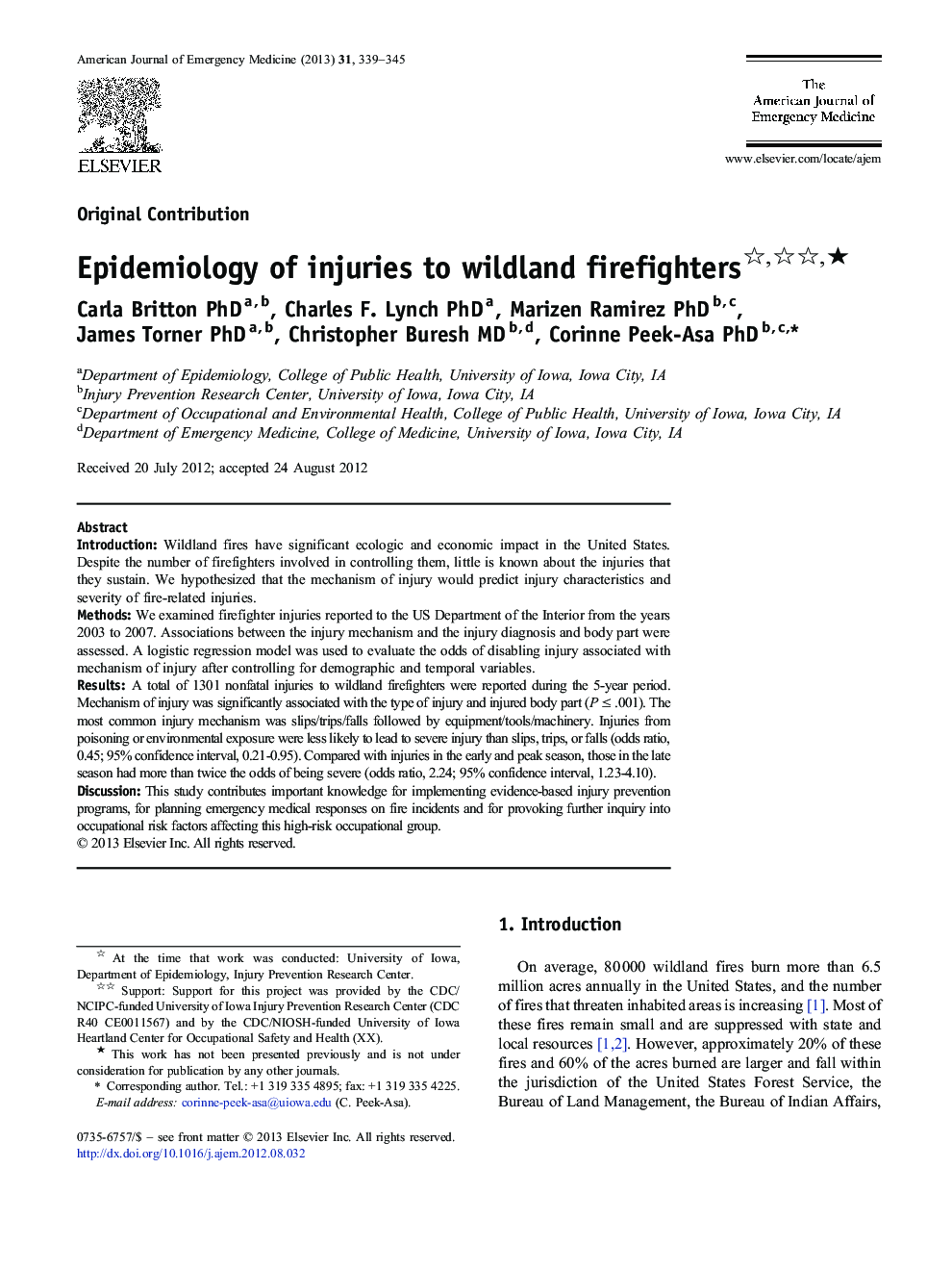| کد مقاله | کد نشریه | سال انتشار | مقاله انگلیسی | نسخه تمام متن |
|---|---|---|---|---|
| 3224608 | 1588133 | 2013 | 7 صفحه PDF | دانلود رایگان |

IntroductionWildland fires have significant ecologic and economic impact in the United States. Despite the number of firefighters involved in controlling them, little is known about the injuries that they sustain. We hypothesized that the mechanism of injury would predict injury characteristics and severity of fire-related injuries.MethodsWe examined firefighter injuries reported to the US Department of the Interior from the years 2003 to 2007. Associations between the injury mechanism and the injury diagnosis and body part were assessed. A logistic regression model was used to evaluate the odds of disabling injury associated with mechanism of injury after controlling for demographic and temporal variables.ResultsA total of 1301 nonfatal injuries to wildland firefighters were reported during the 5-year period. Mechanism of injury was significantly associated with the type of injury and injured body part (P ≤ .001). The most common injury mechanism was slips/trips/falls followed by equipment/tools/machinery. Injuries from poisoning or environmental exposure were less likely to lead to severe injury than slips, trips, or falls (odds ratio, 0.45; 95% confidence interval, 0.21-0.95). Compared with injuries in the early and peak season, those in the late season had more than twice the odds of being severe (odds ratio, 2.24; 95% confidence interval, 1.23-4.10).DiscussionThis study contributes important knowledge for implementing evidence-based injury prevention programs, for planning emergency medical responses on fire incidents and for provoking further inquiry into occupational risk factors affecting this high-risk occupational group.
Journal: The American Journal of Emergency Medicine - Volume 31, Issue 2, February 2013, Pages 339–345